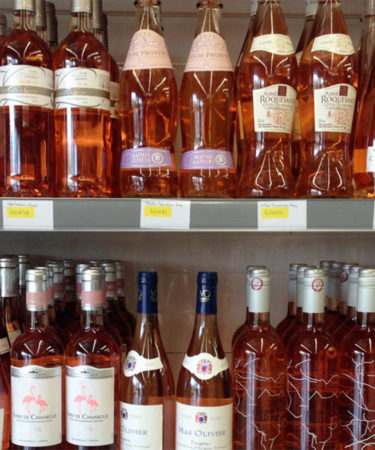As spring’s warm days turn into hot, hot summer, we’re all fantasizing about a nice glass of wine to quench our thirst. Of course, there are many options in terms of refreshing, light wines for hot weather—but ultimately, rosé really is the quintessential beverage for picnics, poolsides, and patios.
When many people think of a great bottle of rosé, it’s the light pink, pale Provençal rosé that typically comes to mind. For whatever reason, American drinkers have come to see this style of rosé, and its snappy, bright acidity, as the best option, but by sticking to this style, you’re missing out on a world of wine, which is why you need to give the darker hued rosés a try.
You don’t have to worry about these wines being sweet – which in my experience is why people tend to shy away from them. They can have some intense fruity notes, but these wines are dry. Next time you’re out to grab a bottle of rosé, take a chance on one of the darker hued pink wines of Southern France. Why do they have a darker color? It has to do partly with which grapes are being used (typically, in Southern France, Grenache plays a role) as well as how long the grape juice is left in contact with the skins. It is in the skins, in fact, that color and tannin are to be found—a rosé wine is made by allowing a short period of skin contact (also called “maceration”), followed by pressing off the juice.
Southern French winemakers are proud of their darker rosé wines, and refer to them as rosé d’assiette, meaning wine for eating, or they also call them “gastronomic” wines. This is because darker rosés typically have more structure and complexity than their pale pink counterparts, thanks to the additional tannins. While pale pink rosé will be bright and refreshing, the darker ones are rich, savory, food-friendly wines. These rosés are typically a blend of Grenache, Cinsault, and Syrah. These are all grapes that thrive in sunny climates and develop rich flavors, often with spicy notes. Doesn’t that sound perfect for making rosé?
Winemaker Leticia Petri-Geraud certainly thinks so. Her family winery has existed in the Roussillon seaside town of Collioures for 5 generations. The Roussillon is a really unique area, nestled in between the Mediterranean Sea and the Pyrenees, which separate France from Spain. Petri-Geraud calls her berry-hued pink wine a “gastronomy rosé, with lots of color, fruity and fresh with minerality like the sea” making it by directly pressing red grapes and bottling that juice—as opposed to the saignee method, which just uses the run-off from grapes that are destined for red wine.
Another excellent choice for darker hued rosé is the Rhone Valley appellation of Tavel, where top-quality rosé wines are made. They are delicious, but also hard to find.
What makes darker hued rosés so wonderful is that they have an ideal balance of minerality and fruitiness that makes one drink glass after glass. And they are excellent with spring and summer foods.
Here are a few delicious dark pink rosés from Southern France that will totally hit the spot when you’re thirsty for a refreshing, but interesting wine. Try these Grenache-based wines with chicken stir-fry, grilled meats or seafood, hearty salads, charcuterie, and salty pasta dishes.
Michel Chapoutier, “Le Vignes de Bila-Haut” – $13
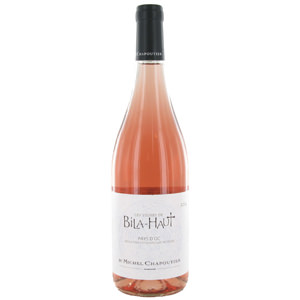 A well-known negociant (someone who purchases grapes for large production) named Michel Chapoutier owns this label. This Grenache-Syrah pink wine comes from the Roussillon; it’s easy to find, consistently good, and well-priced.
A well-known negociant (someone who purchases grapes for large production) named Michel Chapoutier owns this label. This Grenache-Syrah pink wine comes from the Roussillon; it’s easy to find, consistently good, and well-priced.
Orin Swift, “Department D 66, Fragile” – $17
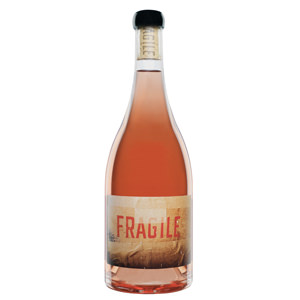 This winery in the Roussillon is a collaboration between a Napa Valley winemaker and a Brit who both fell in love with the beautiful terroir there. It’s mostly Grenache, and is very floral with lots of spice. This bottle can stand up to heavier foods like roast chicken or game.
This winery in the Roussillon is a collaboration between a Napa Valley winemaker and a Brit who both fell in love with the beautiful terroir there. It’s mostly Grenache, and is very floral with lots of spice. This bottle can stand up to heavier foods like roast chicken or game.
Domaine Pélaquié, “Tavel” – $12
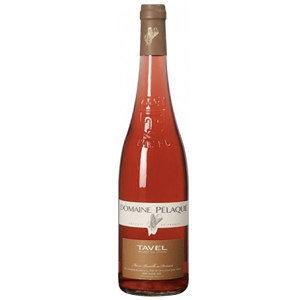 This is a really good, affordable Tavel. It’s actually made in the saignee method described above, but the blend of Grenache and Cinsault gives it plenty of color and flavor. Quite fruity at first, it develops savory notes as you leave the bottle open. Would be good with blue cheese.
This is a really good, affordable Tavel. It’s actually made in the saignee method described above, but the blend of Grenache and Cinsault gives it plenty of color and flavor. Quite fruity at first, it develops savory notes as you leave the bottle open. Would be good with blue cheese.
Guigal, “Côtes du Rhône rosé” – $13
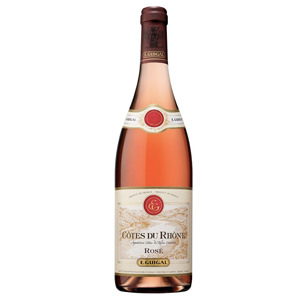 This blend of Grenache, Cinsault, and Syrah packs a mineral blast alongside savory and spice notes. It’s an excellent value, easy to find, and a beautiful shade of coral. You’ll love it with a cheese plate or pizza.
This blend of Grenache, Cinsault, and Syrah packs a mineral blast alongside savory and spice notes. It’s an excellent value, easy to find, and a beautiful shade of coral. You’ll love it with a cheese plate or pizza.
